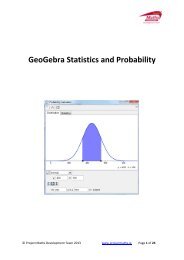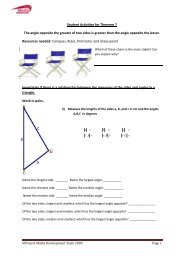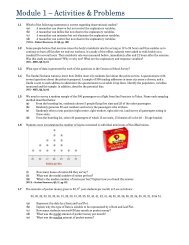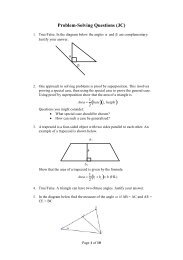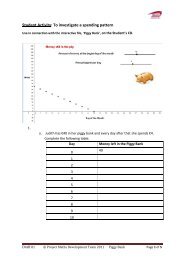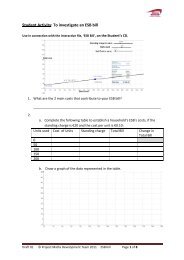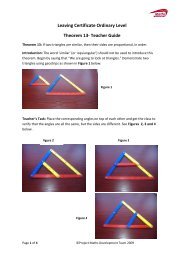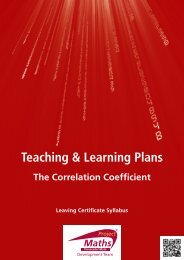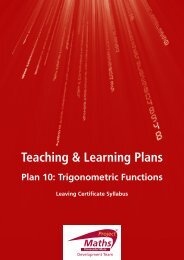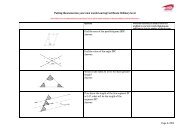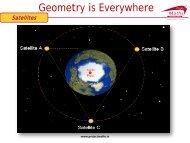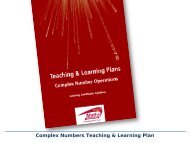Teaching & Learning Plans - Project Maths
Teaching & Learning Plans - Project Maths
Teaching & Learning Plans - Project Maths
Create successful ePaper yourself
Turn your PDF publications into a flip-book with our unique Google optimized e-Paper software.
<strong>Teaching</strong> & <strong>Learning</strong> Plan 2:<br />
Probability and Relative<br />
Frequency<br />
Aims<br />
• To introduce the concept of ‘outcomes’ of an ‘event’<br />
• To estimate likelihood of occurrence of events<br />
• To establish the ‘Sample Space’ as the set of all possible outcomes<br />
Prior Knowledge<br />
Students should have prior knowledge (from T and L Plan 1 and/or from primary school)<br />
of some terms associated with chance and uncertainty. They should be familiar with<br />
probability expressed as a fraction or decimal in the range 0 to 1, or as a percentage in<br />
the range 0% to 100%.<br />
<strong>Learning</strong> Outcomes<br />
As a result of studying this topic, students will be able to<br />
• understand and use the following terminology: trial, outcome, set of<br />
all possible outcomes, relative frequency, event, theoretical probability,<br />
equally likely outcomes<br />
• list all the possible outcomes when rolling a fair die<br />
• recognise that the outcomes on successive throws of a die are independent<br />
of each other<br />
• calculate, from experimental results, the relative frequency for each<br />
outcome and note how it approaches the theoretical probability as the<br />
number of trials increases<br />
• understand the concept of a fair die<br />
• distinguish equally likely outcomes from those which are not<br />
• associate probability with long-run relative frequency<br />
© <strong>Project</strong> <strong>Maths</strong> Development Team 2009 www.projectmaths.ie 1



